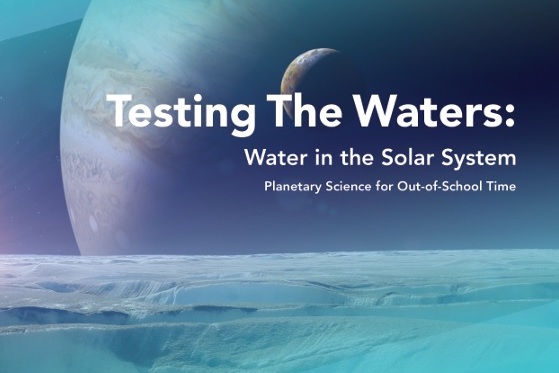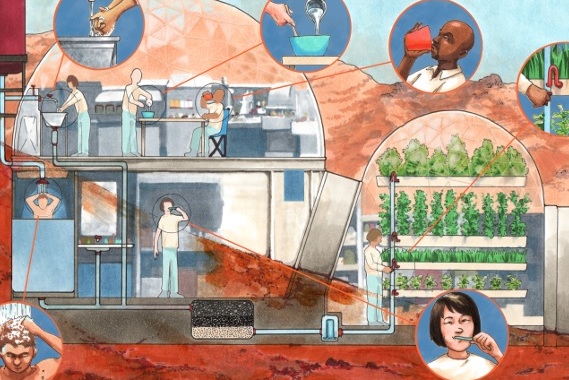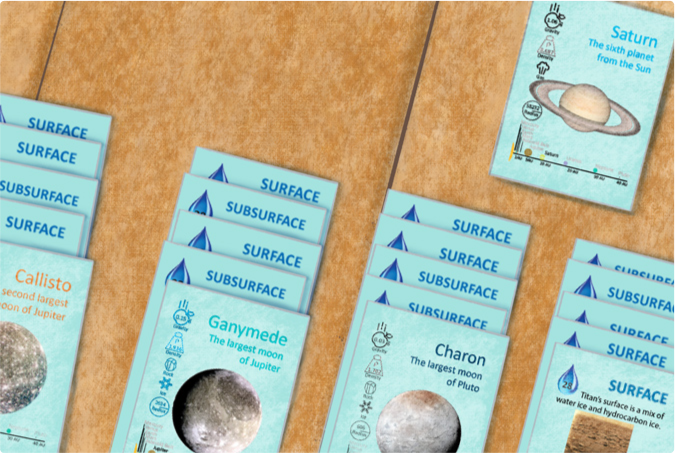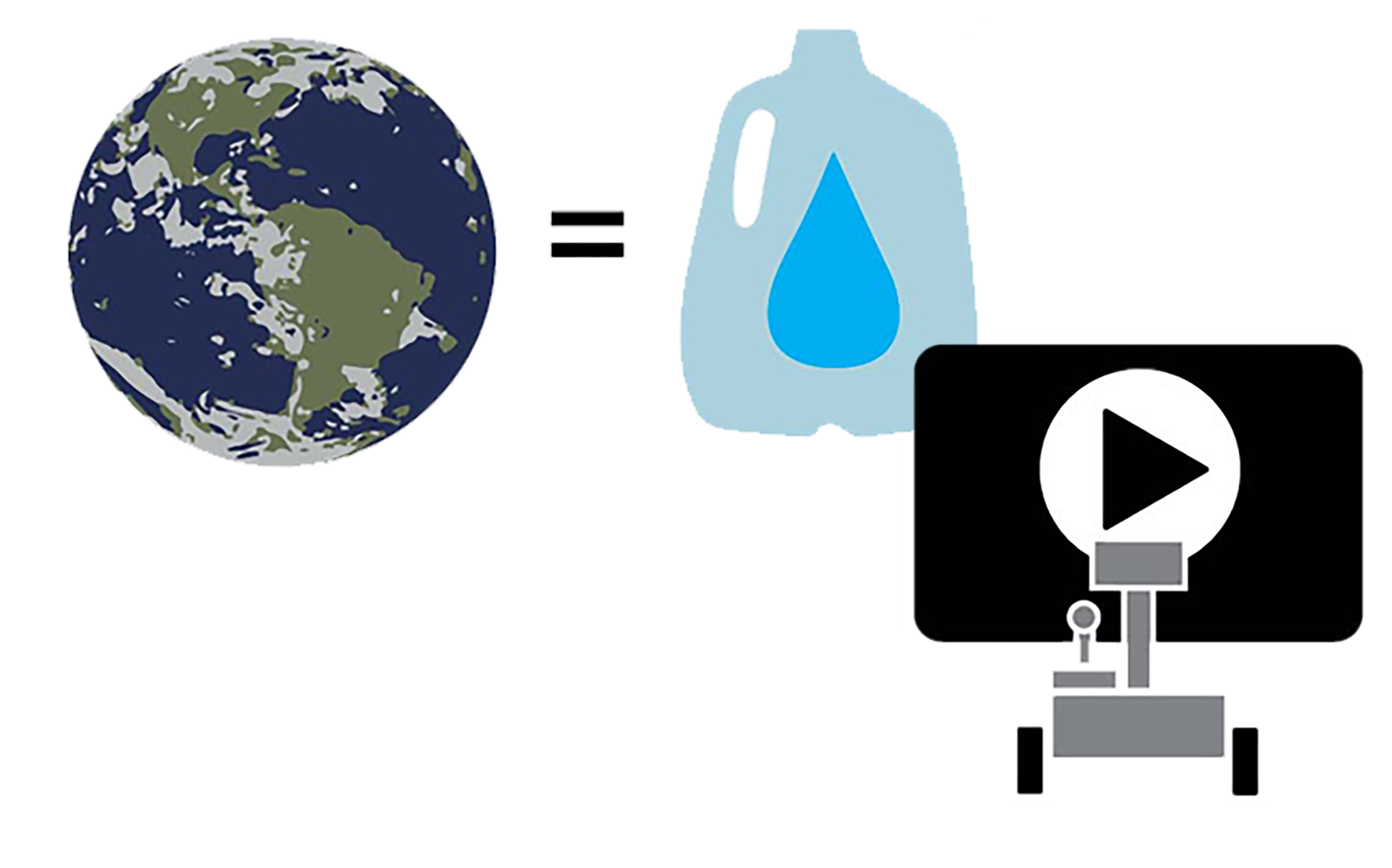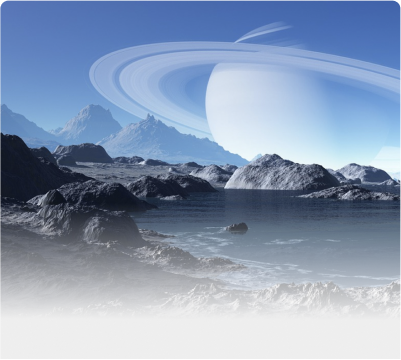
Discover where water is located in our solar system, and engineer a process to reuse this precious resource in an extreme environment!
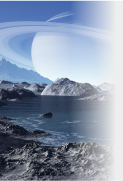
How to Teach These Units
Investigating Filters
Youth explore how different water filter materials reduce contaminants.
Youth Will Know
- Engineers design filters to treat water.
- Different filter materials remove different types of contaminants from water.
- Engineers use the investigate step to learn more about ways they can solve their problem.
Activity Downloads
|
A2_Investigating_Filters_Educator_Guide
Investigating Filters Educator Guide
|
|
|
A2_Investigating_Filters_Engineering_Notebook
Investigating Filters Engineering Notebook (English)
|
|
|
A2_Investigating_Filters_Engineering_Notebook_Spanish
Investigating Filters Engineering Notebook (Spanish)
|
Setup
The Educator Guide has a script, materials list, and prep directions. Be sure to have it open and ready to help guide you through every activity.
- Post EDP Poster.
- Make 8 filter bases, Educator Guide p. 37.
- Create Investigation Chart, Educator Guide p. 32.
- Set up Materials Table: filter materials and scissors.
- Create charcoal filter and yellow test water, Educator Guide p. 32.
Guiding Question
How do filters help us solve our problem of being able to reuse water?
Youth Will Do
- Investigate different materials to see how well they remove or reduce different water contaminants.
Did You Know
- Flint, Michigan gives filters to residents to improve water quality. Lead in pipes dissolves into drinking water and is very harmful to humans. Lead can be removed by filters.
Quick Tips
- Results are subtle: try photos or side-by-side comparisons on a white background.
- Help youth discover on their own that slowing down the filter improves results.
- Sand or cotton balls packed tightly into the nozzle slow the filter rate.
- Help youth interpret test results/decide on fair test procedures like shaking samples.
Glossary
Water Filter: a technology that improves water quality by removing particles or contaminants as the water passes through
Related Videos
Activity Timing
A Grey Area
Youth test the quality of and categorize model water samples using real tools.
Youth Will Know
- Engineers use models to investigate the problem they are trying to solve.
- Engineers and scientists measure water quality to find out how safe the water is to use for certain tasks.
- They can use tools to evaluate water quality.
Activity Downloads
|
A1_A_Grey_Area_Educator_Guide
A Grey Area Educator Guide
|
|
|
A1_A_Grey_Area_Engineering_Notebook
A Grey Area Engineering Notebook (English)
|
|
|
A1_A_Grey_Area_Engineering_Notebook_Spanish
A Grey Area Engineering Notebook (Spanish)
|
|
|
Water-Testing-Cheat-Sheet
Water Quality Cheat Sheet
|
Setup
The Educator Guide has a script, materials list, and prep directions. Be sure to have it open and ready to help guide you through every activity.
- Post EDP Poster.
- Cut and distribute Water Sample Recipes to groups.
- Copy and cut Secchi disks on Educator Guide p. 27.
- Review how to test water quality in guide.
- Set up Materials Table: measuring spoons and scissors.
- Optional: copy acidity chart on Educator Guide p. 29.
Guiding Question
How can we tell if water is safe enough to reuse?
Youth Will Do
- Investigate common household water contaminants.
- Categorize model sample qualities as pure water, waste water, or greywater based on the contaminants found.
Did You Know
Rain is slightly acidic. Most rain has a pH of 5.6 to 5.8. This occurs because carbon dioxide (CO2) from the atmosphere dissolves into rain water. Rain is likely to get more acidic as CO2 levels rise.
Quick Tips
- Have paper towels and a sink handy for clean-up.
- Set pH strips on paper towels.
- Higher water quality scores = higher quality.
- Use the Water Quality Cheat Sheet. See additional A1 card.
Glossary
Greywater: water that has been used at least once and can be used again
Waste water: water that is too dirty to be used again
Videos Related to This Activity
Activity Timing
What Is Technology?
Youth consider the definition of technology as any thing or process humans (engineers) design to solve a problem.
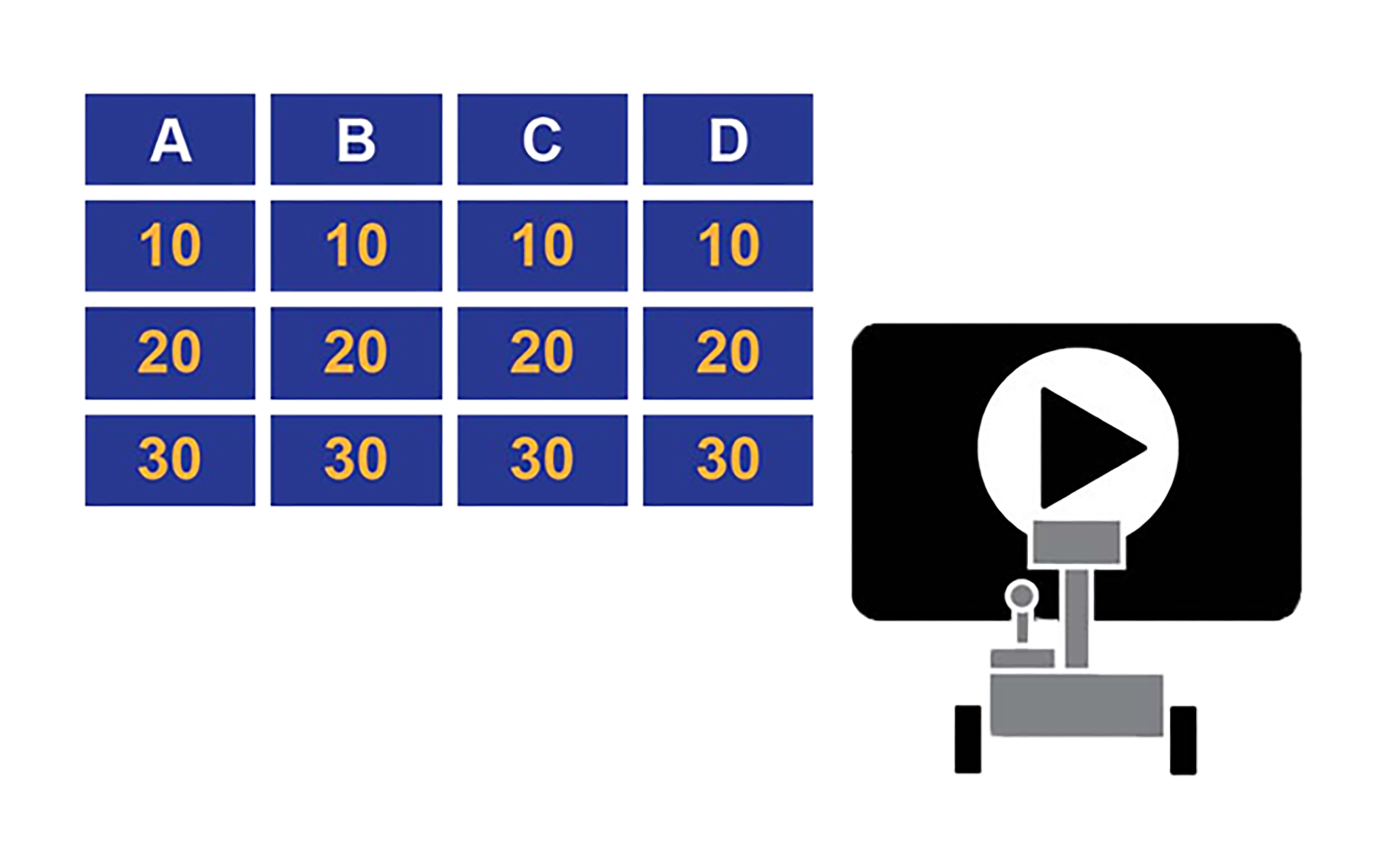
Youth Will Know
- A technology is any thing or process designed by humans to solve a problem.
- A process is a series of steps done in a certain order to solve a problem.
- Water is an important resource that is not always plentiful.
- Greywater is water that has been used once and can be used again.
Activity Downloads
|
P2_What_Is_Technology_Educator_Guide
What Is Technology Educator Guide
|
|
|
P2_What_Is_Technology_Engineering_Journal
What Is Technology Engineering Notebook (English)
|
|
|
P2_What_Is_Technology_Engineering_Journal_Spanish
What Is Technology Engineering Notebook (Spanish)
|
|
|
Water-In-Extreme-Environments-Engineering-Tech-Trivia
Engineering Tech Trivia
|
Setup
The Educator Guide has a script, materials list, and prep directions. Be sure to have it open and ready to help guide you through every activity.
- Post EDP Poster.
- Post technology definition.
- Set up Special Report Video to view.
- Set up and test the Powerpoint game or re-create it with sticky notes.
Guiding Question
What is technology and how can it solve problems?
Youth Will Do
- Define “technology.”
- Play Technology Trivia to learn about technologies and the problems they solve.
Did You Know
Earth has a process to purify water naturally: the water cycle. It's not a technology because humans did not design it, even if it does solve a human problem.
Quick Tips
- Make sure the PowerPoint is in Presenter Mode for trivia game.
- Review the low-tech Trivia Option, Educator Guide p. 10.
- Don't skip the video! It sets the stage for the unit.
- Videos can be subtitled in different languages: Click CC & Settings.
Glossary
Process: a series of steps completed in a certain order to solve a problem
Technology: any thing or process designed by people to solve a problem
Related Videos
Activity Timing
What is Engineering?
Youth engage in an engineering design challenge using an Engineering Design Process (EDP), criteria, and constraints.
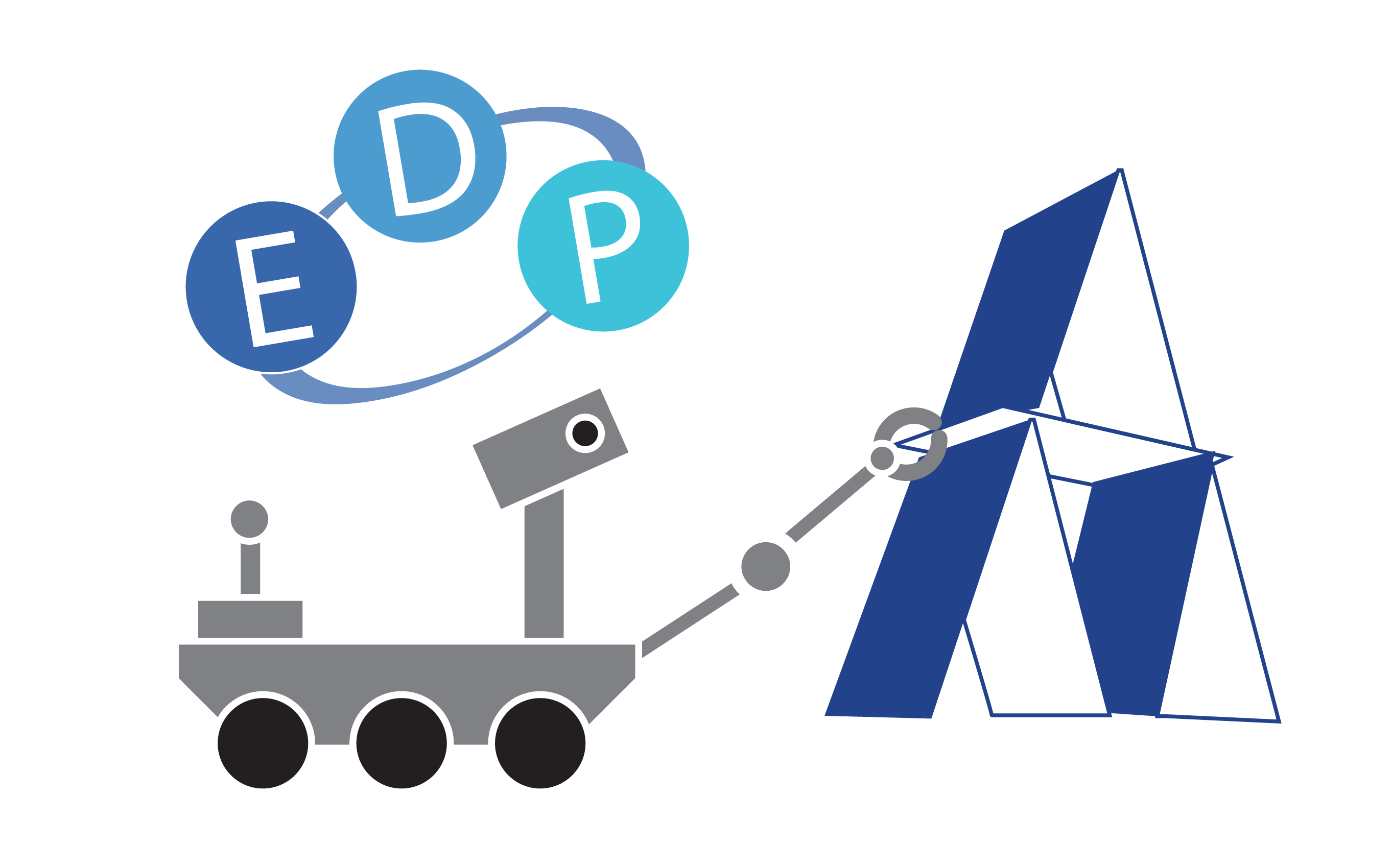
Youth Will Know
- The Engineering Design Process is a tool used by engineers to solve problems.
- They are engineers and they can design a solution to a problem.
Activity Downloads
|
P1_What_Is_Engineering_Educator_Guide
What Is Engineering Educator Guide
|
|
|
P1_What_Is_Engineering_Engineering_Journal
What Is Engineering Engineering Notebook (English)
|
|
|
P1_What_Is_Engineering_Engineering_Journal_Spanish
What Is Engineering Engineering Notebook (Spanish)
|
Setup
The Educator Guide has a script, materials list, and prep directions. Be sure to have it open and ready to help guide you through every activity.
- Post EDP Poster.
- Set up Group Materials: 100 index cards, ruler, scissors.
- Set up Materials Table: 4 rolls masking tape.
- Fill and seal water container.
Guiding Question
How can we design something to solve a problem?
Youth Will Do
- Work together to engineer a tower to support a model water tank.
Did You Know
Use duct tape much? You probably engineer more than you think. Anytime you design a makeshift tool because you don't have exactly what you need, you are engineering.
Quick Tips
- Identify each EDP step during the in wrap up.
- Criteria:
- Work in groups.
- Elevate container 1 foot.
- Support container for 10 seconds.
- Constraints:
- 20 minutes to work.
- Limited to given materials.
- Scissors and ruler cannot be in tower.
Glossary
- Criteria: things that you or your design need to do
- Constraints: ways that you or your design are limited
Activity Timing
Choosing a Potential Water Reservoir to Explore and Share Out
Youth propose a planetary body to explore based on the availability, accessibility and usability of water and present their choice.
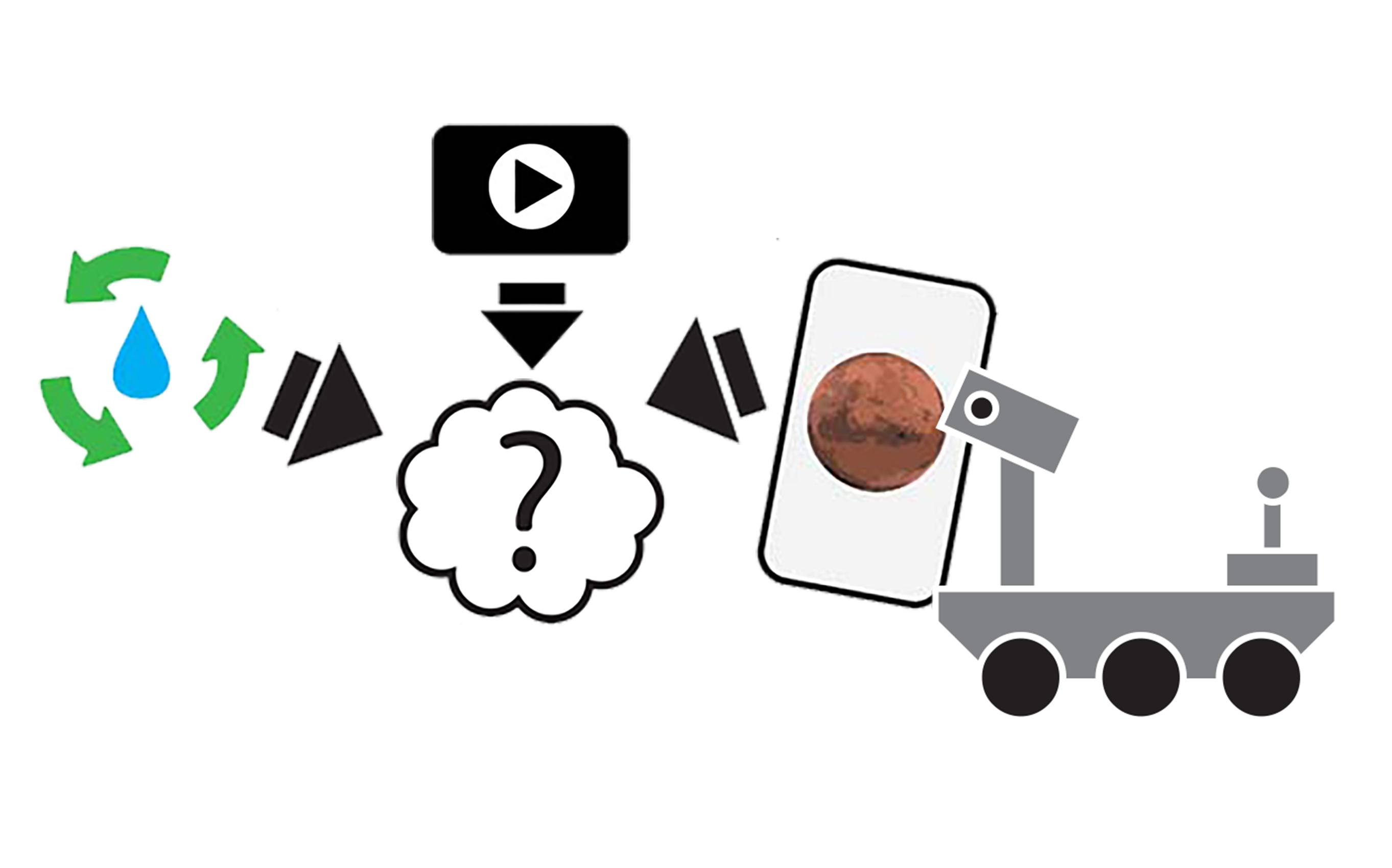
Youth Will Know
They can use data about water from elsewhere in the solar system to make recommendations for future exploration.
Activity Downloads
|
S3_Choose_a_Potential_Water_Reservoir_to_Explore_Educator_Guide
Choosing a Potential Water Reservoir Educator Guide
|
|
|
S3_Choose_a_Potential_Water_Reservoir_to_Explore_Science_Notebook
Choosing a Potential Water Reservoir Science Notebook
|
Setup
There is no prep for this activity.
Guiding Questions
- Is any of the water elsewhere in the solar system potentially habitable for primitive life?
- Is any of the water elsewhere in the solar system accessible and usable for potential future astronauts or future human colonies?
Youth Will Do
- Consider all the information they have learned on water usability and habitability and consider if their water reservoirs are most promising to explore for humans (usability) or primitive life (potential habitability).
Did You Know?
- We don't actually know if water is usable on other planets. If it's mixed with other substances or appears rocky, then at least we know its not pure.
- Amino acids are organic compounds that form the building blocks of life. Scientists have found evidence for them in space—on meteorites, comets, and in deep space.
Quick Tips
- Consider showing the whole playlist of background content videos on our website, or just Water and Habitability.
- When we don't have sufficient evidence for something, it is called scientific uncertainty.
Related Videos
Activity Timing
Water in the Solar System
Youth explore where water is available in the solar system and begin to consider its accessibility and usability.
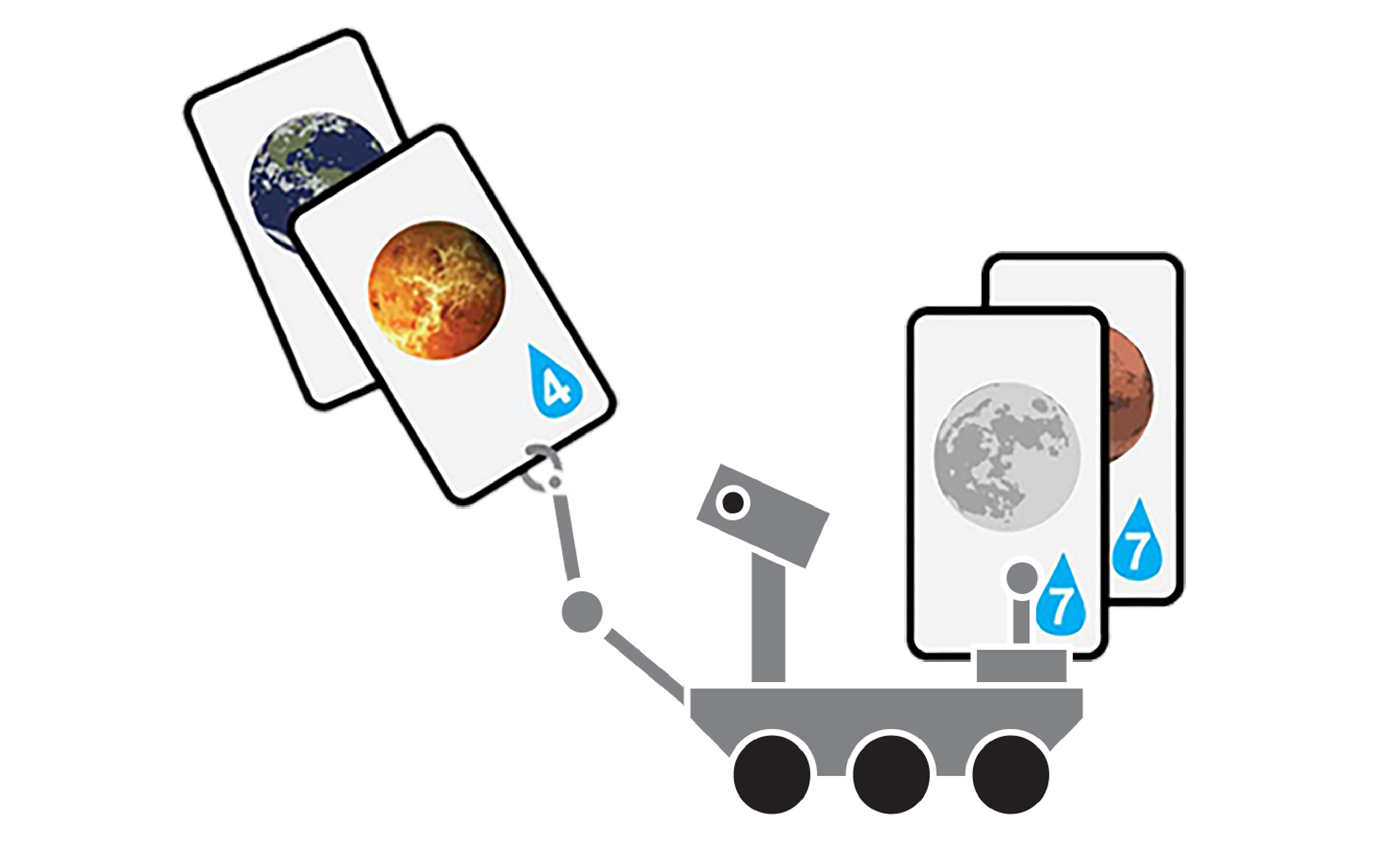
Youth Will Know
- Water is abundant in our solar system.
- Water is found in different reservoirs (surface, subsurface, and atmosphere).
- More water is located in the outer part of the solar system than closer to the Sun.
Activity Downloads
|
S2_Water_in_the_Solar_System_Educator_Guide
Water in the Solar System Educator Guide
|
|
|
S2_Water_in_the_Solar_System_Science_Notebook
Water in the Solar System Science Notebook
|
|
|
Water-in-Extreme-Environments-Planetary-Science-Cards
Planetary Cards
|
Setup
The Educator Guide has a script, materials list, and prep directions. Be sure to have it open and ready to help guide you through every activity.
- Print and post tables, Educator Guide pp. 36–39, around the room.
- Print and cut cards.
- Optional: laminate cards for future use.
Guiding Questions
- Where is the most water found in the solar system?
- What kind of water is available in the solar system and in what planetary bodies?
Youth Will Do
Compare and contrast the amount and accessibility of water among sites in the solar system.
Did You Know?
We drink water molecules that dinosaurs drank. Earth's water has been around for billions of years: check out the Water in the Solar System video.
Quick Tips
- Distribute cards for investigating water in the solar system in groups or shuffle and deal randomly, Educator Guide p. 25.
Glossary
- Reservoir: a place where something is stored (in this case, water)
